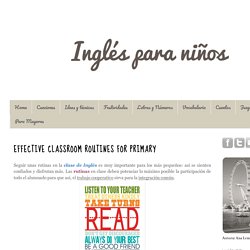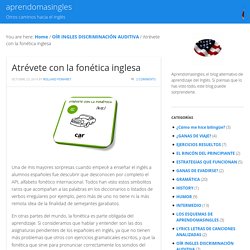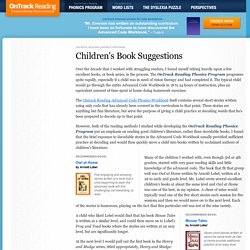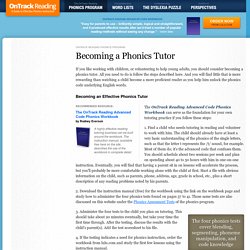

Theory (Phonics on the Web) In teaching reading, there are two main schools of thought: phonics and whole language.

Phonics involves explicitly teaching a student how to pronounce words by analyzing its individual components, whereas whole language relies heavily on reading comprehension and context to memorize the sounds of words. Whole language works well for some students who can pick up on these patterns intuitively; for less fortunate students, such as those suffering from dyslexia, a phonics approach works best. On this website, I will advocate a combination of both phonics instruction and whole language, as each has its drawbacks when used exclusively, but combined, these two theories will complement each other.
ESL Phonics. These ESL Phonics guidelines can improve your reading and spelling.

Phonics shows the relationships between the letters and sounds of a language. Most English phonics instruction is to help native English-speaking children learn to read. They need help because of the varied relationships between letters and sounds in English. Teaching Decisions: The Digraphs "wh" and “th” OnTrack Reading Phonics Program Many of you who work with struggling readers have no doubt noticed the way they often will confuse what for that, or when for then, or who for how, or even the for a, and vice versa.

I’ve dealt with a relatively large number of such children and have noticed two patterns to their confusion: 1. Most of the children who confuse these pairs of words usually can’t spell them, and 2. The Cause of the Problem While there's the distinct possibility that this problem is being caused by some of the words involved being taught as "sight words," that is, without explaining the underlying phonics information, many phonics curricula do, in fact, fail to teach the digraphs “th” and “wh” properly.
The Solution. Bilingüismo: la fonética inglesa en la educación infantil. El bilingüismo es uno de los principales objetivos de la educación en muchos colegios.

EFFECTIVE CLASSROOM ROUTINES FOR PRIMARY. 3.

Ask if there is any birthday in the classroom. 4. Dressing Our Pet. Es muy útil tener una marioneta en el aula, la cual para los más pequeñitos puede ser un teddy bear o una mascota. Le podemos pedir a nuestros alumnos y alumnas que la vistan según el tiempo que haga, siendo así una buena manera de repasar el vocabulario referente a la ropa. 5. Con una English Corner en el aula, podemos poner en esa esquina todas las flashcards de vocabulario que han sido enseñadas durante el curso. CHOOSING ONE STUDENTCada cierto tiempo debemos escoger a un alumno para ciertas tareas, juegos, etc.
One, two, three four five, Atrévete con la fonética inglesa - aprendomasingles. Una de mis mayores sorpresas cuando empecé a enseñar el inglés a alumnos españoles fue descubrir que desconocen por completo el API, alfabeto fonético internacional.

Todos han visto estos simbolitos raros que acompañan a las palabras en los diccionarios o listados de verbos irregulares por ejemplo, pero más de uno no tiene ni la más remota idea de la finalidad de semejantes garabatos. En otras partes del mundo, la fonética es parte obligada del aprendizaje. Si consideramos que hablar y entender son las dos asignaturas pendientes de los españoles en inglés, ya que no tienen más problemas que otros con ejercicios gramaticales escritos, y que la fonética que sirve para pronunciar correctamente los sonidos del inglés no se enseña… ¿Cómo sorprendernos?
Teaching Reading: Choosing the Right Phonics Program. Children's Book Suggestions. OnTrack Reading Phonics Program Over the decade that I worked with struggling readers, I found myself relying heavily upon a few excellent books, or book series, in the process.

The OnTrack Reading Phonics Program progresses quite rapidly, especially if a child was in need of vision therapy and had completed it. The typical child would go through the entire Advanced Code Workbook in 18 to 24 hours of instruction, plus an equivalent amount of time spent at home doing homework exercises. The Ontrack Reading Advanced Code Phonics Workbook itself contains several short stories written using only code that has already been covered in the curriculum to that point. These stories are anything but fine literature, but serve the purpose of giving a child practice at decoding words that he's been prepared to decode up to that point.
Many of the children I worked with, even though 3rd or 4th graders, started with very poor reading skills and little knowledge of the advanced code. Becoming a Phonics Tutor - Mastering Phonics Instruction. OnTrack Reading Phonics Program If you like working with children, or volunteering to help young adults, you should consider becoming a phonics tutor.

All you need to do is follow the steps described here. OnTrack Reading. Perspectives What are the odds that you've just stumbled upon the best strategy ever devised for decoding longer words?

About zero, I suspect you'd say. OnTrack Reading. Perspectives I learned something this week that might tell us something about the difference between American phonics teaching and British phonics teaching while I was working on one of the pages of my website, Explaining Split Vowel Digraphs.

The British are Coming! It was already a pretty good entrance page for my site but after I finished the tweaking, traffic began to grow from search engine results, so I was checking it out more closely. To my surprise, about 75% of the people entering the site via that page were coming from England! Apparently the English use the term split digraph much more than we Americans do. Personally, as I explain on that particular page on my site, I think the British are being more sensible because all letters are silent, and the word magic has one meaning to a child, i.e., you'll find this amazing but you won't understand how it can be.
Now If Only the Americans Would Follow. Explaining Split Vowel Digraphs ("Magic-e" or "Silent-e") OnTrack Reading Phonics Program This lesson on split vowel digraphs, often referred to as Silent e, or even Magic e, by teachers, is an extremely important lesson to conduct properly. Here are two items you can download for use when teaching the concept of a split digraph, but be sure to closely follow the steps described below to get the most benefit from them. OnTrack Reading: Overcoming Your Child's Reading Problems. Teaching Reading: Choosing the Right Phonics Program. Teaching the Phonograms. Step by Step Instructions Once you've made the changes to the rules in The Writing Road to Reading (WRTR), you can begin teaching the phonograms. Follow the instructions in WRTR, but make the modifications below: Obtain the 84 Phonogram Cards You will need the 84 Phonogram Cards that incorporate the changes that have been discussed.
They are currently available as a PDF download of 14 front pages and 14 back pages with six cards per page. Go to Lulu.com to view or purchase the OnTrack Reading Phonogram Flash Cards. Organization of the Word Lists. Comprehensive Word Lists The word lists available here at OnTrack Reading break down into two major categories: spellings of vowel sounds and spellings of consonant sounds. Within the vowel sound category, lists are divided into one-syllable words and words of two or more syllables. Telling b from d - Stopping b and d Reversal Confusion. OnTrack Reading Phonics Program About a third of the younger clients that I worked with had trouble confusing "b" and "d" when reading.
Most of them had been told at least one "tip" for addressing what is commonly called a b and d reversal problem. Around here, making the word bed with both hands out front of them seemed to be the most popular, but the kids I worked with would still be having consistent problems with b and d reversals. Over the years, I explained the following method to each of them and, within a week or so, their problem with b/d confusion would be solved, provided they make one significant change in writing behavior. It’s not my own method. Teaching Reading: Choosing the Right Phonics Program.